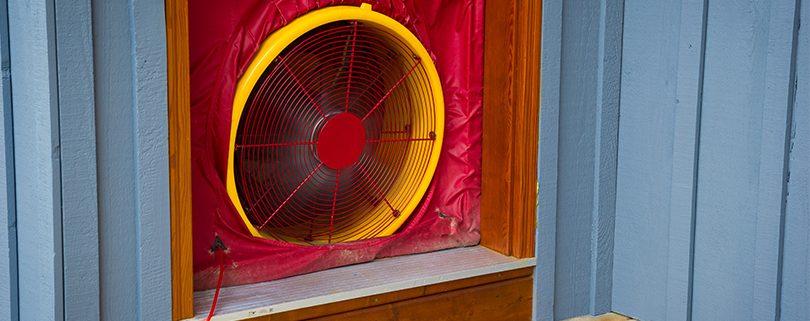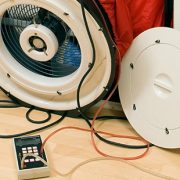Pass The Blower Door Test First Time
If you are constructing a home, Section 402.4.1.2 of the Florida Building Code 5th Edition 2014 Energy Conservation Now requires the property to undergo – and pass – blower door testing. This test seeks to ascertain the air infiltration of a building, a key contributor to energy efficiency. To pass the blower door test the first time, it is important to ascertain what the test is actually for.
What is a blower door test?
A blower door test involves:
- A powerful fan is mounted at an exterior door to the property.
- This fan is used to withdraw the air from the property.
- This lowers the air internal air pressure significantly.
- The external air pressure then flows through cracks, holes, and other openings in the home.
- A measurement of the air infiltration of the building is then taken by a manometer.
- If this measurement is satisfactory, the test is passed.
- If not, leaks must be identified and rectified. A smoke pencil is sometimes used to assist in the identification of gaps and openings that are contributing to air infiltration issues.
What constitutes a ‘pass’ on the blower door test?
The 2015 International Energy Conservation Code (IECC) advises the following:
- Residential buildings: a maximum of 3 ACH50 (air changes per hour at -50 Pascal) .
- Commercial buildings: a maximum .40 CFM/square foot of envelope are at -75 Pascal.
When can a blower door test take place?
A blower door test should take place before construction is finalized, but when the following elements are installed:
- Doors and windows (including hardware and weatherstripping).
- Door thresholds.
- Hatches to unconditioned attics.
- Hatches to unconditioned crawl spaces.
- Dampers.
- Fireplace doors.
- Light fixtures.Plate covers.
It is also advisable to conduct a blower door test when:
- Hatches to unconditioned attics and/or crawl spaces have been gasketed.
- Plumbing traps have been filled.
- Conduits that lead outside have been sealed.
- Work is complete on air handlers and all ductwork.
It may also be beneficial to inspect the property and fix any holes, gaps, cracks, or openings that are visible to the naked eye. Managing these issues should help you to ensure you pass the blower door test first time.
How should a property be configured during the test?
There is a specific section of the IECC that dictates how a house should be set up for the blower door test. This includes:
- Exterior windows and doors should be closed.
- Fireplace and stove doors should be closed.
- Exhaust, intake, backdraft, and flue dampers should be closed.
- Interior doors are left open.
- Exterior openings for ventilation systems should be closed and sealed.
- Heating and cooling systems should not be operational during the test.
- HVAC supply and return registers cannot be sealed.
The professional conducting the test will usually check these elements prior to commencing.
How can you pass the blower door test the first time?
- Only work with qualified, experienced builders that are aware of the need to work to the standards required to pass the test.
- Conduct the blower door test at the right time, when the elements mentioned in section two are in place.
- Perform both an internal and external inspection of the property to identify any gaps or openings, and fill anything you find.
In conclusion
Passing the door blower test first time is not an exact science, but with diligence during construction and careful inspection for gaps and openings, you will give yourself the best possible chance.






Leave a Reply
Want to join the discussion?Feel free to contribute!